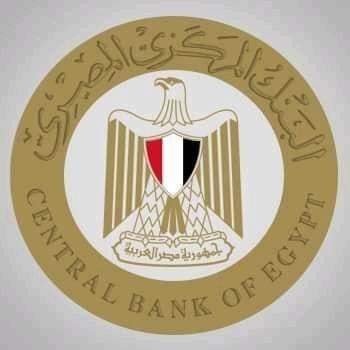The third filling of the Renaissance Dam: Popular frustration at the Egyptian government’s reaction
Ethiopia is currently preparing for the third filling of the Renaissance Dam. The Egyptian citizen is frustrated by this announcement and the Egyptian government’s failure to persuade Addis Ababa to coordinate the manner and method of filling. It should be noted that there has been no progress in the stalled negotiations since July last year. Last July, Ethiopia unilaterally completed the process of the second filling of the Renaissance Dam, while the first filling took place in July 2020.
Egypt is putting pressure on Ethiopia to sign a binding agreement on filling and operating the dam, which construction began in 2011, yet these attempts failed.
According to several African affairs and water dam experts, the work on the Renaissance Dam is currently progressing, albeit slowly. But Addis Ababa is on its way to the third filling of the dam without coordination with Cairo. This third phase is scheduled for three months, next July, during the flood period. Experts have criticized the position of the Egyptian Foreign Ministry, which is stagnant in this file, as there has been no diplomatic reaction since the speech of the Egyptian Minister Sameh Shoukry before the Security Council on July 8. It was during this speech that he said that this Ethiopian approach and its continued unilateral actions reveal its disrespect for the rules of international law and reveal its true political objectives, which are to control the Nile and transform it from a river that is crossing borders and giving life to a tool to exert political influence and expand control, which threatens to undermine peace and security in the region.
Expected UAE intervention
Experts expect that UAE and perhaps Saudi Arabia will intervene as mediators to resolve this file and make progress in the negotiations on the Renaissance Dam between the Nile Basin countries: Egypt, Sudan and Ethiopia. The current events in Sudan contributed to worsening Cairo’s position. Indeed, the political instability that coincided with Cairo’s demand to conduct military manoeuvres with Sudan to pressure Addis Ababa has not been accepted because of the conflict in Khartoum between Abdel Fattah Al-Burhan, the Vice President of the Sudanese Sovereign Council, Mohamed Hamdan Daglo (Hemet).
Sources explained that if the Renaissance Dam is completed in this unilateral way by Addis Ababa, this will encourage many Nile Basin countries to build new dams on the Blue Nile, which feeds Cairo with more than 80% of its waters. There are fears that it will become a tradition and a model for some African countries that wish to build dams on the Blue Nile without coordination with the downstream countries, Egypt and Sudan. This establishes a de facto position and chaos in building dams between the Nile Basin countries with Ethiopia’s current constraint on the Egyptian government.
Exorbitant cost
Sources confirmed that the Renaissance Dam forced the Egyptian government to take costly policies, like the canal lining project. For this project, the Egyptian government allocated 68 billion EP as a national project and reduced rice-growing areas, as there was – before the reduction of the rice area – a surplus that was being exported. The rice-growing area was reduced to 750,000 acres of agricultural land only in 2018 and reached 724,000 acres of agricultural land according to the Ministry of Irrigation plan for the 2020 season, in addition to 200 thousand acres of agricultural land cultivated with agricultural drainage water and 150 thousand acres of agricultural land with the water-saving technique, with a total of one million and 74 thousand acres of agricultural land approximately. Thus, Egyptian rice production is expected to reach 3 million tons after reducing the area. One million tons will be imported from abroad to cover the deficit, as Egypt requires 4 million tons.
The price of rice generally varies between 400 and 450 dollars per ton, depending on the variety. The total import cost becomes approximately 420 million dollars. We must add that Egypt lost its export quota, which amounted to another million tons until 2017, with a total value of nearly $420 million in export earnings. We should know that rice is the only summer crop that brings a profitable return to the farmer, and without its cultivation, the farmer will abandon his work. As part of its moves to fill the water deficit due to the Grand Ethiopian Renaissance Dam, the Egyptian government has decided to expand the sewage treatment scheme as one of the solutions to overcome the shortage of fresh water.
The government recently opened the Bahr al-Baqar water treatment plant in Sharkia Governorate (Northeast). It is the largest water treatment plant globally, and it costs 20 billion pounds. The government also planned for some seawater desalination projects, for which investments of nearly 50 million dollars were allocated until 2037.
Egypt suffers from water poverty, estimated by the United Nations at about 1,000 cubic meters of water annually. Egypt’s share of Nile water is 55.5 billion cubic meters annually, and about 20 billion cubic meters of water comes from groundwater, rain, water treatment, and seawater desalination. According to the Egyptian Minister of Irrigation, Mohamed Abdel-Aty, Egypt’s water needs amount to 114 billion cubic meters. Egypt recognized the Renaissance Dam for the first time through a “declaration of principles” signed in Khartoum on March 23, 2015, four years after the actual start of its construction. The dam holds 74 billion cubic meters behind it, which will affect Egypt’s water share.





Recent Comments